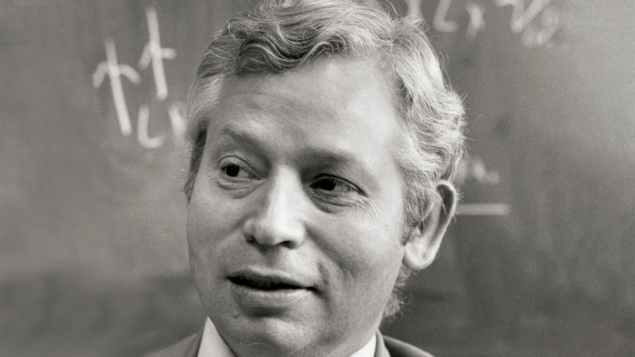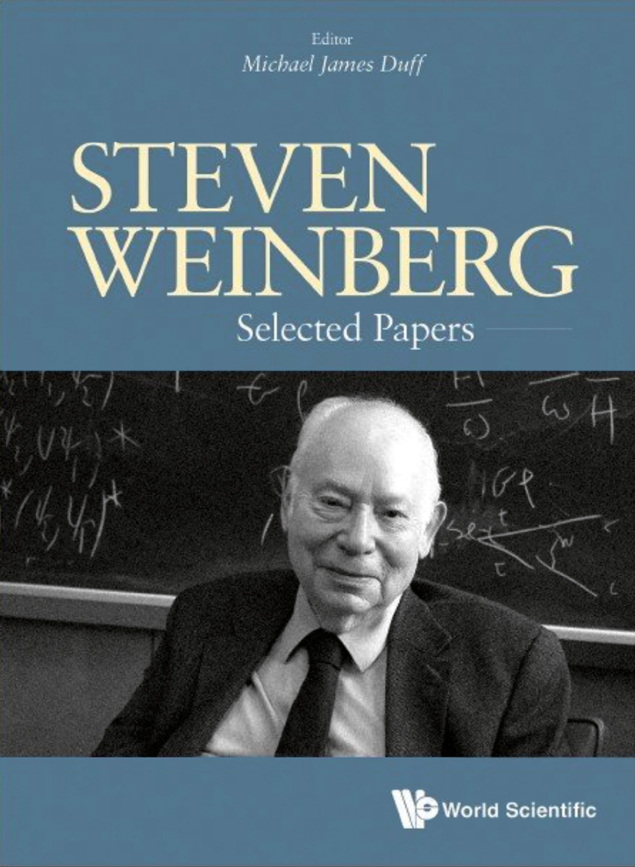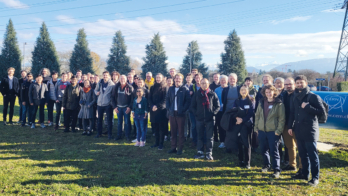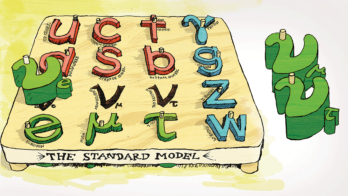Steven Weinberg – Selected Papers, edited by Michael Duff, World Scientific

Steven Weinberg was a logical freight train – for many, the greatest theorist of the second half of the 20th century. It is timely to reflect on his legacy, the scientific component of which is laid out in a new collection of his publications selected by theoretical physicist Michael Duff (Imperial College).
Six chapters cover Weinberg’s most consequential contributions to effective field theory, the Standard Model, symmetries, gravity, cosmology and short-form popular science writing. I can’t identify any notable omissions and I doubt many others would, though some may raise an eyebrow at the exclusion of his paper deriving the Lee–Weinberg bound. Duff brings each chapter to life with first-hand anecdotes and details that will delight those of us most greatly separated from historical events. I am relatively young, and only had one meaningful interaction with Steven Weinberg. Though my contemporaries and I inhabit a scientific world whose core concepts are interwoven with, if not formed by, Steven Weinberg’s scientific legacy, unlike Michael Duff we are poorly qualified to comment historically on the ecosystem in which this legacy grew, nor on aspects of personality. This makes his commentary particularly valuable to younger readers.
I can envisage three distinct audiences for this new collection. The first is the lay theorist – those who are widely enough read to recognise the depth of Weinberg’s impact in theoretical physics and would like to know more. Such readers will find Duff’s introductions to be insightful and entertaining – helpful preparation for the more technical aspects of the papers, though expertise is required to fully grapple with many of them. There are also a few hand-picked non-technical articles one would otherwise not encounter without some serious investigative effort, including some accessible articles on quantum field theory, effective field theory and life in the multiverse, in addition to the dedicated section on popular articles. These will delight any theory afficionado.
The second audience is practising theorists. If you’re going to invest in a printed collection of publications, then Weinberg is an obvious protagonist. Particle theorists consult his articles so often that they may as well have them close at hand. This collection contains those most often revisited and ought to be useful in this respect. Duff’s introductions also expose technical interconnections between the articles that might otherwise be missed.

The third audience I have in mind are beginning graduate students in particle theory, cosmology and beyond. It would not be a mistake to put this collection on recommended reading lists. In due course, most students should read many of these papers multiple times, so why not get on with it from the get-go? The section on effective field theories (EFTs) contains many valuable key ideas and perspectives. Plenty of those core concepts are still commonly encountered more by osmosis than with any rigour, and this can lead to confused notions around the general approach of EFT. Perhaps an incomplete introduction to EFT could be avoided for graduate students by cutting straight to the fundamentals contained here? The cosmology section also reveals many important modern concepts alongside lucid and fearless wrestling with big questions. The papers on gravity detail techniques that are frequently encountered in any first foray into modern amplitudology, as well as strategies to infer general lessons in quantum field theory from symmetries and self-consistency alone.
In my view, however, the most important section for beginning graduate students is that on the construction of the Standard Model (SM). It may be said that a collective amnesia has emerged regarding the scientific spirit that drove its development. The SM was built by model builders. I don’t say this facetiously. They made educated guesses about the structure of the “ultraviolet” (microscopic) world based on the “infrared” (long-distance) breadcrumbs embedded within low-energy experimental observations. Decades after this swashbuckling era came to an end, there is a growing tendency to view the SM as something rigid, providentially bestowed and permanent. The academic bravery and risk-taking that was required to take the necessary leaps forward then, and which may be required now, is no better demonstrated than in “A Model of Leptons”. All young theorists should read this multiple times. A Model of Leptons exemplifies that not only was Steven Weinberg an unstoppable force of logic, but also a plucky risk taker. It’s inspirational that its final paragraph, which laid out the structure of nature at the electroweak scale, ends with doubt and speculation: “And if this model is renormalisable, then what happens when we extend it to include the couplings of A and B to the hadrons?” By working their way through this collection, graduate students may be inspired to similar levels of ambition and jeopardy.
Amongst the greatest scientists of the last century
In the weeks that followed the passing of Stephen Weinberg, I sensed amongst a number of colleagues of all generations some moods that I could have anticipated; of the loss of not only a bona fide truth-seeker, but also of a leader, frequently the leader. I also perceived a feeling that transcended the scientific realm alone, of someone whose creative genius ought to be recognised amongst the greatest of scientists, musicians, artists and humanity of the last century. How can we productively reflect on that? I imagine we would all do well to learn not only of Weinberg’s important individual scientific insights, but also to attempt to absorb his overall methodology in identifying interesting questions, in breaking new trails in fundamental physics, and in pursuing logic and clarity wherever they may take you. This collection is not a bad place to start.





